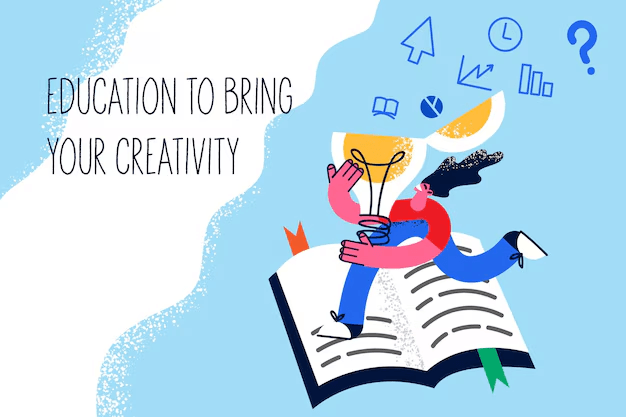How Creative Learning is Shaping Tomorrow’s Thinkers in Indian Classrooms
India’s education system is evolving—and fast. As classrooms across the country shift from rote memorization to exploration, creative learning is taking center stage. This isn’t just a new teaching method—it’s a mindset. One that sparks curiosity, fuels imagination, and equips students with the tools they need to navigate an unpredictable world.
At institutions like SSRVM (Sri Sri Ravishankar Vidya Mandir), this transformation is already underway. Rooted in values yet committed to innovation, SSRVM exemplifies how progressive education can shape students into thoughtful, capable thinkers ready for the future.
What Is Creative Learning?
Creative learning goes beyond textbooks. It encourages students to ask questions, try new approaches, and learn by doing. It’s less about finding the “right” answer and more about discovering why things work the way they do.
Instead of traditional lectures, creative classrooms often include:
Hands-on projects that link concepts to real-world problems
Collaborative learning where students work together to solve challenges
Art, music, and storytelling to express understanding in diverse ways
Curiosity-driven exploration, rather than rigid syllabus chasing
In short, creative learning makes education meaningful. And when students care about what they’re learning, they remember it longer and apply it better.
Why Indian Classrooms Are Ripe for Change
India has one of the youngest populations in the world. But many of its classrooms still operate like factories, standardized, rigid, and exam-focused. The need for progressive education has never been greater.
Here’s why now is the right time:
The job market is changing. Tomorrow’s careers demand creativity, collaboration, and adaptability.
Tech is everywhere. Students are already learning outside classrooms. Schools must catch up.
Parents are more informed. There's growing demand for holistic, stress-free learning environments.
NEP 2020 backs it. The National Education Policy explicitly supports creative and collaborative learning models.
SSRVM’s Approach: Where Values Meet Innovation
At SSRVM, creative learning isn’t an add-on, it's part of the DNA. Their teaching philosophy blends ancient wisdom with modern education, creating a safe space for students to thrive mentally, emotionally, and intellectually.
Some key practices include:
- Integrated Learning Projects
Students work on interdisciplinary projects that connect math, science, literature, and art. For example, a lesson on ecosystems might involve:
Writing a story about forest life
Creating a model of the food chain
Collaborating on environmental solutions
This is collaborative learning in action—where kids learn with each other, not just from the teacher.
-
Freedom to Think Differently
Instead of sticking to a one-size-fits-all approach, SSRVM gives students space to explore ideas in their own way. They can draw, build, debate, or perform—whatever helps them grasp the concept best. -
Mindfulness & Value Education
True creativity isn’t chaotic, it's grounded. SSRVM builds emotional intelligence through yoga, meditation, and value-based discussions. This cultivates self-awareness, empathy, and focus traits every thinker needs. -
Student-Led Classrooms
Teachers act as facilitators, not lecturers. Students present, lead discussions, and question assumptions. This cultivates leadership and accountability.
Benefits of Creative Learning in Real Life
Creative learning isn’t just “nice to have.” It directly impacts how well students do both inside and outside the classroom.
✔ Builds Better Problem-Solvers
By encouraging experimentation, students learn how to think on their feet. Whether it’s fixing a science model or resolving a peer conflict, they approach challenges with confidence.
✔ Fosters Teamwork and Communication
Collaborative learning teaches students to listen, contribute, and build on each other’s strengths—skills they’ll use in every job, relationship, or group they’re part of.
✔ Enhances Academic Performance
Contrary to myths, creativity doesn't water down academics. In fact, when students engage actively, they understand deeper and score higher.
✔ Supports Emotional Growth
Progressive education supports the whole child—not just the intellect. Creative tasks often help children express feelings they can’t put into words, building resilience and mental health.
How You Can Support This Shift
Whether you’re a parent, educator, or policymaker, here’s how you can encourage creative learning:
Ask schools about their teaching methods. Look beyond grades—ask about group projects, real-world connections, and creative activities.
Create space at home. Allow kids time to explore music, art, puzzles, or even simple “boredom time” where imagination thrives.
Celebrate effort, not just results. Creative learning is about the process, not just perfection.
Also read: How Artistic Expression Boosts Creativity and Problem-Solving in Children
FAQ: Creative Learning in Indian Schools
1. Is creative learning suitable for all age groups?
Yes. From preschoolers painting stories to high-schoolers solving case studies, creative learning can be tailored for every developmental stage.
2. Can creative learning help with board exams?
Absolutely. It helps students understand rather than memorize, leading to better retention and performance in exams.
3. How is creative learning different from regular teaching?
It focuses on exploration, collaboration, and real-world application—rather than passive absorption of facts.
4. Does creative learning replace traditional subjects?
No. It enhances them. Math, science, history, and language are still taught—just in more engaging and practical ways.
5. What role does collaborative learning play in this model?
It’s central. Learning in groups improves critical thinking, negotiation, and empathy—skills that can’t be learned solo.
Final Thought
India’s young minds deserve more than memorization—they deserve inspiration. With creative learning, collaborative learning, and progressive education, we’re not just filling minds; we’re shaping thinkers, leaders, and problem-solvers.

